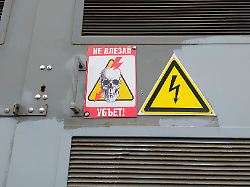Since the attack on Ukraine, Russia has been pumping the largest amounts of oil and gas towards China. But the power grid in Siberia and the Far East is not equipped to handle these volumes – and is increasingly breaking down due to overload.
Since the attack on Ukraine, Russian raw material deliveries have in many cases only had one destination: China. Moscow has lost many partners in the West, but the People’s Republic is happy to buy oil and gas at cheap prices. Russia is willing to play the discount gas station: they are happy to increase their oil deliveries for the development of the Chinese economy, explained Russian leader Vladimir Putin was patronizing in March when he was visited by his counterpart Xi Jinping in Moscow.
But it’s not as easy as Putin promises. The end of Gazprom as a global gas supplier seems to be sealed, because there is no new pipeline for further deliveries to China, which Beijing absolutely does not want to approve. Russia cannot deliver more oil either, because in this case too, the existing infrastructure in the Far East is proving to be a bottleneck. The reported the independent Russian exile media The Bell.
43 pumping stations require electricity
China gets its oil via the East Siberia-Pacific pipeline. The tube runs about 2,700 kilometers from Taishet in the heart of Siberia to the town of Skovorodino in the Amur region on the Chinese border. On the Way there The steel monster meanders through earthquake zones, overcomes large differences in altitude and several climate zones.
At Skovorodino the pipeline finally splits: the first line has been carrying oil to the Chinese city of Daqing since 2010. The second, much longer strand was completed in 2012 and ends 2,000 kilometers later at the Pacific port of Kosmino near Vladivostok on the Sea of Japan. There the oil can be loaded onto ships and distributed around the world.
Theoretically anyway, because there are more and more problems along the way: Along the East Siberia-Pacific pipeline there are Distance of 70 to 150 kilometers a total of 43 pumping stations that the oil has to pass through when it flows to China or the Pacific. In these stations it is “pushed” in a controlled manner so that the sticky mass reliably reaches its destination with new momentum. But as The Bell reports, the state pipeline operator Transneft has to turn off the electric motors of these pumps more and more often because the power grid in the Far East is overloaded.
25 power outages in nine months
In recent months, Russia has steadily increased its delivery volumes to China in order to compensate for the loss of European business. The previous maximum amount of was reached in February via the East Siberia-Pacific pipeline, the transit country Kazakhstan and oil tankers 2 million barrels per day delivered. The financial service provider S&P Global took this from the import data from Chinese customs. According to the Russian state agency Interfax, around 619,000 barrels daily.
You can listen to all episodes of “We learned something again” in the ntv app and everywhere there are podcasts: RTL+, Amazon Music, Apple Podcasts, Google Podcasts and Spotify. With the RSS feed also in other apps. You have a question? Please send us an email to [email protected]
However, it does not seem possible to further increase the delivery quantity due to infrastructure limitations. According to The Bell, Transneft’s documents show that the flow of oil to China has already had to be stopped 25 times in the first nine months of this year due to disruptions and power outages. In contrast, from 2020 to 2022 there were only 17 power outages in the region. Transneft blames Russian Railways for this, which has also increased its train traffic to China since the start of the war.
“The railway network is overloaded”
The disruptions are still causing comparatively minor problems: According to Transneft data, 17,000 tons of oil did not arrive in China at the agreed time this year. That’s the equivalent of 2,319 barrels, a fraction of the amount that flows through the East Siberia-Pacific pipeline every day.
The problem, however, is that Russia has only just begun its pivot to the Far East: Russian Railways wants to further expand its capacities in the region in order to be able to transport more freight to and from China. However, the additional rail traffic would put further strain on the power grid on the Pacific and in large parts of Siberia. Transneft therefore already fears that the pipeline problems will increase.
But not increasing train traffic is not an option either: “The railway network is overloaded,” a Russian China expert warned months ago, according to The Bell. He reports on never-ending traffic jams on the rails towards China and the Pacific.
The Russian energy supplier Rosseti therefore wants to convert this and next year four billion euros invest in the power grid in Siberia and the Far East. The Russian pivot to the East is expensive fun.
“Learned something again” is a podcast for those who are curious: Why would a ceasefire probably just be a break for Vladimir Putin? Why does NATO fear the Suwalki Gap? Why does Russia have iPhones again? What small behavioral changes can save 15 percent energy? Listen in and get a little smarter three times a week.
You can find all episodes in the ntv app RTL+, Amazon Music, Apple Podcasts and Spotify. For all other podcast apps you can use the RSS feed.
You have a question? Please send us an email to [email protected]
